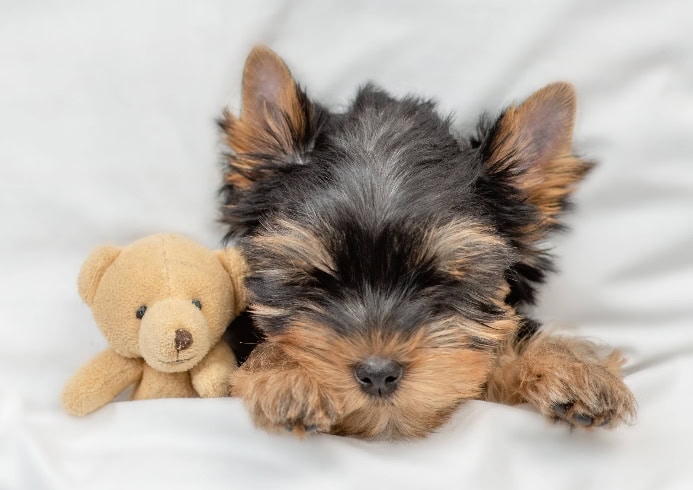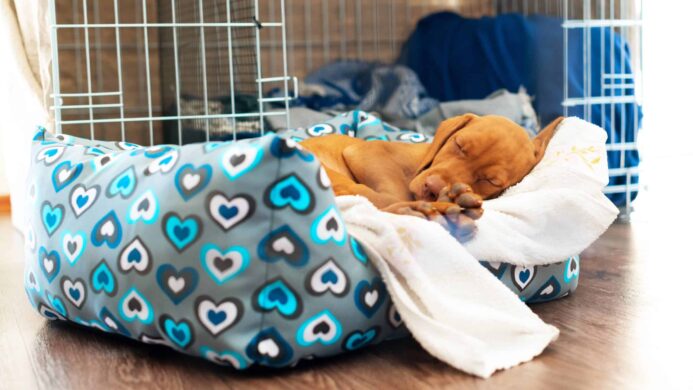Creating a Comfortable Sleep Space for Your Puppy
When you bring your new puppy home, the first night can be a significant moment in their adjustment to their new environment. One of the most important things you can do is create a comfortable and secure sleeping area for them. This space should be quiet, low-traffic, and free from distractions. It could be a corner of a room or a separate area like a laundry room or study.
To make the space inviting, provide a cozy dog bed or blanket that is appropriately sized for your puppy. Consider using a washable cover for easy cleaning. If you decide to use a crate, ensure it is just the right size—large enough for your puppy to stand, turn around, and lie down comfortably but not too spacious. Line the crate with soft bedding and add a few safe toys.
Including familiar objects, such as a piece of clothing or a blanket with your scent, can help your puppy feel more at home. Puppies are sensitive to temperature, so make sure the sleeping area is neither too hot nor too cold. A calm and relaxing environment will help your puppy associate this space with comfort and safety.
Introducing Your Puppy to Its Sleep Spot
Introducing your puppy to its sleep spot should be done gradually. Start by choosing a quiet and comfortable location in your home. Make it inviting with a cozy bed or soft blanket. Gently place your puppy in the designated area and speak in a soft, soothing voice to encourage it to settle. You can also set a favorite toy or treats nearby to make the spot more appealing.
Spend some time sitting near the area to help your puppy feel safe and secure. Patting or softly talking to your puppy can create a positive association with the sleep spot. If your puppy explores or seems unsure, gently guide it back to the area without forcing it. Always be patient, as your puppy may take some time to feel comfortable.
Consistency is key, so try to encourage your puppy to sleep in the same spot each night, reinforcing it as a safe space. Over time, your puppy will associate the area with comfort and rest.

Minimizing Whining and Crying
Handling whining and crying during your puppy’s first night can be challenging. Here are several strategies to help ease the transition and make the experience stress-free:
- Using dog crates: Introduce the crate as a positive space by placing toys or treats inside and leaving the door open for exploration.
- Familiar items: Offer comfort items like a blanket or a toy that smells like your puppy’s mother or littermates.
- Stay calm: Reacting with stress can increase your puppy's anxiety.
- Gradual independence: For the first night, consider sleeping in the same room as your puppy to help them feel less alone. Gradually transition to another room as they settle in.
- Soothing sounds: Soft music or white noise can calm your puppy by masking anxiety-triggering sounds.
- Consistency: If your puppy whines, it might need to go outside. Take it out for a bathroom break, then return it to its sleeping spot.
- Avoid reinforcing bad behavior: If your puppy cries for attention and you comfort it right away, it may learn that whining gets results. Wait for a moment of silence before offering reassurance.
- Be patient: It’s normal for puppies to feel anxious on their first nights away from their litter. With time and reassurance, they will adapt to their new home.

Setting a Routine
The most important thing to do with your new puppy is to set a routine as quickly as possible. Dogs thrive on routine, so setting a schedule with designated times for meals, playtime, training, sleeping, exercise, and potty breaks will help your puppy adjust to your home. Sticking to your feeding schedule will help immensely with potty training.
When you arrive home, take your puppy to its designated potty area so it will know where to go in the future. Try to make the crate as comfortable as possible and add a hot water bottle to mimic the effect of sleeping beside its mother’s warm body.
Crates are helpful because they prevent your puppy from entering rooms unsupervised, which can add to stress and confusion while you’re trying to establish the puppy’s potty routines. Using the crate can also help if you haven’t puppy-proofed your home yet.
Keep your puppy in the crate for about two hours at a time. Then take it out to do its business and let it explore for 15 minutes before putting it back in the crate. Do this at night, too. A bedtime routine will help your puppy relax and prepare for sleep.
If necessary, set alarms to help you remember your puppy’s schedule so you can get it out regularly for potty breaks.

Giving Your Puppy Plentiful Attention
The first and only thing you should probably do is give your puppy all the attention you can. Be sure to cuddle and talk to your puppy. This will help build and strengthen your bond. It is important to remember that your puppy just left its mother and is only about two months old.
Understand that your puppy is likely nervous about being in a new place. It’s been taken from a familiar environment and everything it knows. If you live with them or they plan to come over, warn your family not to fuss over the new pup too much. While you might want to show your puppy attention, too much can be stressful for your new puppy.
Preparing for Your New Puppy
One of the best things you can do for your new dog is to prepare for their arrival. Use a new puppy checklist to ensure you have the puppy supplies you need, including food and a water bowl, a harness and leash, a collar, toys, a playpen, and a crate. All dog breeds are different, and they require different things, so do research about the dog you want to get.
For example, Yorkies are highly adaptable dogs, and skipping a walk or two could be forgiven, but they are also prone to developing separation anxiety. Whippets, on the other hand, have a strong prey drive and need to stay on a leash while you give them at least an hour of exercise daily.
The first 24 hours are significant for setting the tone with your new puppy and shaping their personality. Set a routine for your puppy as quickly as possible, and try not to create undue stress. The most important thing a responsible dog owner can do is become knowledgeable about their dog, meet its needs, and help their puppy have a successful first night.
Ensuring Your Puppy’s First Night Success
Bringing home a new puppy can be a thrilling yet challenging experience, especially during your puppy’s first night. By designating a secure, comfortable sleeping space, gently introducing your new best friend to it, and implementing strategies to minimize whining and crying, you can create a positive environment that helps young puppies adjust.
Remember to be patient and consistent, as these early days lay the foundation for your puppy’s training and development. With love, care, patience, and proper guidance, you can help your furry friend feel safe and comfortable, setting the stage for a happy and harmonious life together.